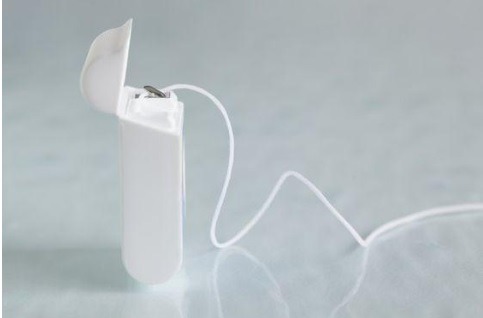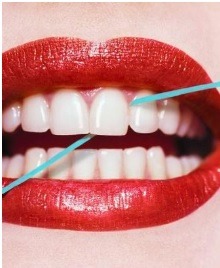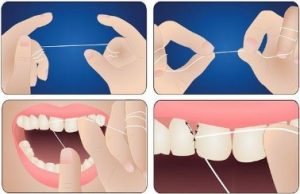
We learn from a young age why it’s vital for our teeth that we brush them twice a day. While most people follow that rule, there is one thing that some forget – and that’s flossing.
You might hear it a lot at the dentist but are unsure why it’s recommended so highly. Keep reading to learn the benefits of flossing and why it should be a constant in your nightly routine!
Why do we need to floss and brush our teeth?
 Brushing is fantastic at removing plaque on the visible teeth surfaces, in between your regular clean appointments that you have with your dental provider, it keeps any bacteria that forms plaque from lingering. Flossing is the technique used to remove the bacteria that forms plaque from the spaces in between the teeth. Brushes can’t reach those areas and require a very fine object to clean those surfaces. Those surfaces between the teeth are nearly half the tooth surface!
Brushing is fantastic at removing plaque on the visible teeth surfaces, in between your regular clean appointments that you have with your dental provider, it keeps any bacteria that forms plaque from lingering. Flossing is the technique used to remove the bacteria that forms plaque from the spaces in between the teeth. Brushes can’t reach those areas and require a very fine object to clean those surfaces. Those surfaces between the teeth are nearly half the tooth surface!
What are the benefits?
- Flossing protects the gums
By removing the plaque that enter the gums from between the teeth, it reduces the chances of developing oral health issues such as gingivitis. Gingivitis, if left untreated can cause severe periodontal diseases like periodontitis which result in bone loss and potential loss of teeth.
- Flossing protects the teeth
Enamel is the strong protective surface on the outside of our teeth. With regular nightly flossing, you can reduce the risk of developing cavities and therefore keeping your teeth bright, strong, and healthy!
- Flossing can reduce the risk of other diseases
While flossing keeps your teeth and gums healthy, it’s also been shown that regular flossing and prevention of gingivitis and periodontitis can in turn decrease the likelihood of preventing other diseases like cardiovascular disease, diabetes, and respiratory illness. If the disease doesn’t get a chance to enter the blood stream, it cannot create any issues in the other areas of the body.
So, how do you floss properly?
- Wind 30-40cm of floss around your middle fingers and leave a few centimetres to floss with

- Holding the floss tight in your thumb and index fingers, start moving the floss gently up and between your teeth
- Gently curve the floss along the sides of the teeth, ensuring that you go beneath the gum line to get the entire surface
- Never snap or force the floss into a gap as you could potentially damage the gum tissue
To start getting into the habit, try flossing before you brush before bed, so you don’t forget. Soon it will become a standard nightly routine along with your brushing.
If you have any questions about flossing, or different flossing methods, never hesitate to ask at your next dental check-up!
